A woman’s place is in science
The number of women in science or engineering has increased in recent years, but not nearly enough
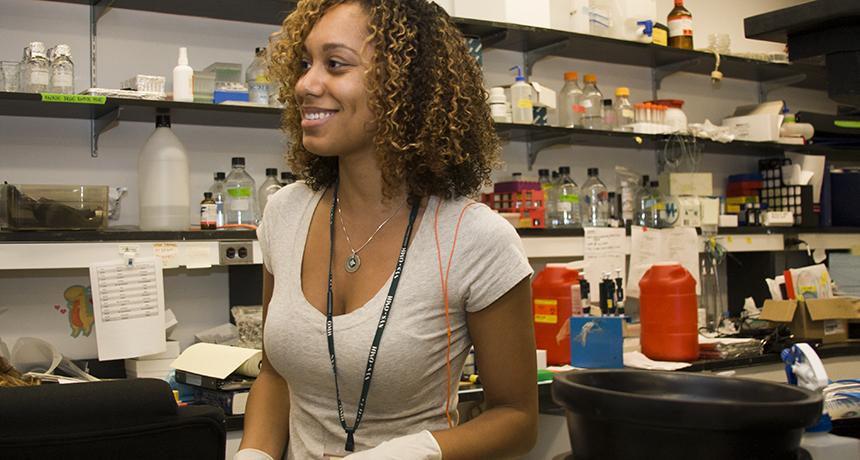
Tabia Santos was a research assistant in a neuroscience lab at the Columbia University Medical Center. Now she is using what she has learned as she trains to be a surgeon at the Hofstra School of Medicine in Hempstead, N.Y. (where she is student body president). “One fun fact about me? I love to bake,” she says. “When I’m not studying, making sweet treats is one of my favorite ways to relax.”
Last October in a noisy ballroom in Nashville, Tenn., six girls sat at a round table to design a spacecraft that could land on the moon. They started by thinking about ways the craft could fail. If it lands too hard, for example, the astronauts could be injured or killed. And a parachute won’t help. It works only when it falls through the air — which the moon doesn’t have. At length, the girls settled on two designs. Both relied on springs to soften the landing.
Then came the harder part: Building and testing models. That wouldn’t be easy, considering that their materials were limited to a few drinking straws, a couple of notecards, a small paper cup and a handful of marshmallows. The marshmallows represented the astronauts. The cup was the spacecraft.
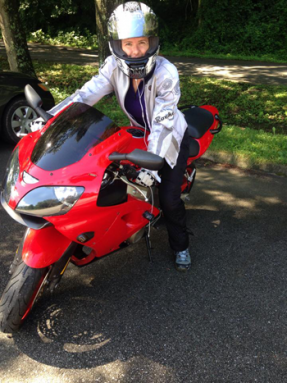
“We can bend these four straws — then they’re kind of like a spring,” offered one ponytailed team member, age 13. She reached for a straw and duct tape. An 11-year-old scooped up a marshmallow astronaut and pretended to bite.
“Ew. That’s a gross idea,” called out another lunar-lander design engineer.
“Not if you’re hungry!” protested another, laughing. After much cutting, bending, taping and talking, the team tested its final version. The marshmallow astronaut plummeted down — and stayed secure inside its spacecraft cup. Success!
These girls, along with hundreds more, were attending a program of the Society of Women Engineers: “Invent It. Build It.” During this annual event, girls in grades 6 to 8 solve problems using the ideas and methods of science. In other words, that makes they become engineers for a day.
“You can change the world with engineering,” says Mary Perkinson, who directs programs like this one for the society. “You have the opportunity to make a big impact.” As an engineer, Perkinson helps design and improve the cranes used in construction and building big ships at Newport News Shipbuilding, in Virginia. “I hire people who like to work with their hands — and aren’t afraid of heights,” she says.
The “Invent It. Build It” program offers girls hands-on experience with problem-solving. Many of those girls may go on to become researchers. That’s important because there’s a glaring gap between men’s and women’s participation in science and engineering.
According to the most recent U.S. data, only one in six engineers is a woman. Only about two in every five chemists are female. (Chemists study the properties of different substances.) And there is only one woman in computer science and mathematics for every three men.
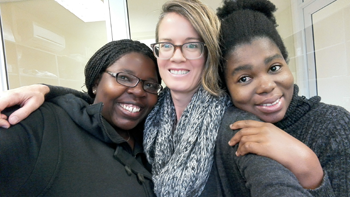
The share of men and women is more equal in a few other fields. Women make up slightly more than half of all biologists, for instance. But among all scientists and engineers, women make up just 27 percent — or only a bit more than one in four — of these workers.
A number of programs are trying to raise those numbers by sparking an interest in girls for science, technology, engineering and math, or STEM. But another issue drives Perkinson. Simply put: Too few people — male or female — are studying engineering in college. Before long, the United States risks “a skills gap,” she says. People will lack the training to fill all of the jobs that will become available.
Beating back the untruths
Perkinson’s father was an engineer. He often gave her science kits when she was a child. After talking to other engineers, she learned that her childhood in the 1970s and 1980s was unusual. “Most females my age or older didn’t get that kind of experience to fuel their love of science and math,” she says. Instead, girls were often directed toward a class called “home economics,” which taught skills like cooking and sewing.
She wants to change that. “We want to make sure girls see role models that are like them.”
The share of women in STEM jobs may be low, but it has improved in some fields. Slowly.
In the 1800s, women scientists were rare. Few women were allowed to get a college degree or hold down a job in any field, let alone science. Gradually, universities opened up to women. Soon, they began entering the world of science. (In many places, though, girls still do not have the same educational opportunities as boys.)
By the 1960s, about one in 100 U.S. engineers — and one in 12 chemists — were women. Since then, the numbers of women in these fields has continued to improve, even if parity has not yet been reached. Other fields have not seen the same improvements. In 1960, men outnumbered women in computer science three to one. It’s no better today.
(Story continues below graph)
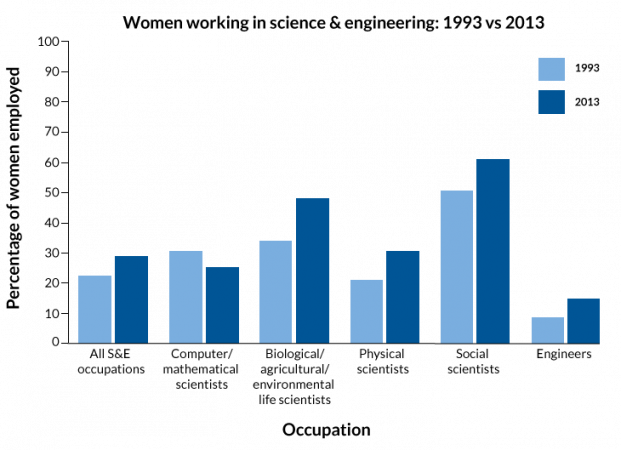
“I think we’ve made a lot of progress,” says Jean Morrison. Still, she notes, there’s “more progress to be made.” Morrison trained as a geologist in the 1980s and spent many years studying the chemicals that make up Earth’s crust. Over time, she began to volunteer for — and lead — university programs to increase the number of women in science fields. Now, she is provost of Boston University in Massachusetts. (The provost is the top person in charge of the school’s academic mission.) Training as a scientist gave her the ability to analyze problems and find solutions, she says. Those skills help her run a major university. “They’re really helpful in clear-eyed decision-making,” she says.
As a leader, she’s also very aware of the challenges women face in STEM. Many trace to stereotypes — long-held attitudes that are not based on facts.
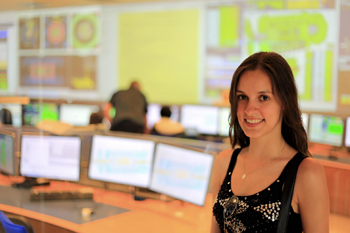
One of the big stereotypes: that boys naturally do better than girls in math and science. There is little evidence that this is true. Indeed, there is a lot of evidence that girls are just as talented in math and science as boys are. In the United States, girls and boys do about equally well. In many countries, girls outperform boys in math and science. That’s the finding of a study that came out last year in the journal Intelligence.
Despite this, Morrison says the idea that boys are better at math and science remains “deeply ingrained.” This means that people can hold onto the idea even without any evidence backing it up. And those deeply ingrained ideas may affect people in ways that aren’t obvious. They can even lead girls to perform worse on math and science tasks, studies show.
Out in the open
Government surveys show girls and boys take roughly the same number of science and math classes in high school. The majority of college graduates are woman. But in college, men are twice as likely to major in science, although it varies by field. Women are more likely to study biology in college, for instance. Men are more likely to study engineering or computer science.
Men also are more likely to get a job in STEM. That may be due, in part, to those stereotypes that women aren’t as good at science or as smart as men. Indeed, there is some research pointing to this impact.
A 2015 study in Science, for instance, surveyed more than 1,800 researchers. They worked in more than 30 areas, including 18 science and math fields. Women, it found, were most poorly represented in fields that were most likely to consider intelligence a requirement for success.
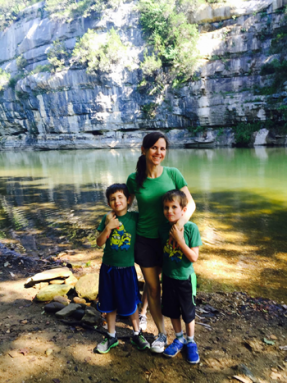
Ernesto Reuben studies human behavior at Columbia University in New York City. His team showed how those stereotypes can affect decisions on who gets a job. They asked volunteers to pretend to “hire” a new employee to do a mathematical task. The choice was between a man and a woman. When the volunteer knew nothing about the employees except for their appearance, men were twice as often offered the job. The 2014 study appeared in the Proceedings of the National Academy of Sciences (PNAS).
Two years earlier, researchers at Yale University in New Haven, Conn., had published a related study in PNAS. It asked scientists to review job applications from equally qualified students. The only difference on the applications was whether the candidate’s name was male or female. Overall, both men and women scientists judged the male candidates as better qualified — based only on their apparent gender. Even when a woman was selected to get a job, the review committee offered her a salary $4,000 less than had been offered to men they said they would hire.
A 2013 study published in Science Communication found that these stereotypes may also affect how scientists interpret the quality or value of another’s work. Participants in that experiment were asked to rate abstracts written for scientific conferences. In general, abstracts supposedly authored by men received higher ratings.
Morrison says schools at every level need to pay attention to whether they are treating people differently based on their gender. One reason: It could have impacts beyond who gets hired.
In 1995, for instance, the Massachusetts Institute of Technology (MIT) in Cambridge organized a committee to see if women received equal treatment there. Few women taught in the university’s School of Science at that time. And conversations between some of those women led them to suspect men were given preferential treatment.
It turned out those women had been right. The committee showed that female professors at MIT were paid less than did men who had the same job. The women also received fewer awards and got less space in which to do research.
That report caught people’s attention. It also prompted calls for change. MIT began hiring more women and setting up policies to make sure they were treated fairly. At least as importantly, this report started a national conversation about women in science.
Before the report, Morrison says, women often kept quiet about any unequal treatment they experienced. She credits MIT for getting the subject “out on the table.” That report, she says, “allowed us to start talking about the problem.” And those discussions are still ongoing.
Gazing into the future
For girls who want to work in science, astronomer Debra Elmegreen has some advice: Work hard.
“Actually, it’s similar to the advice I give boys,” she says. First, she says, take lots of math and science classes in high school and college. “Second, don’t let anyone tell you, ‘You can’t do it.’”
Elmegreen followed her own advice on her path to becoming a scientist. As a child growing up in Indiana in the 1950s and 1960s, she was mesmerized by the stars in the night sky. She knew that she wanted to be an astronomer, a scientist who studies space. As a high school student, in 1971, she entered the Science Talent Search. (This science fair competition has been going strong for 75 years. Now sponsored by Regeneron, Science Talent Search is a program of Society for Science and the Public, which also publishes Science News for Students.) Elmegreen won 8th place that year for studying bursts of radio waves coming from the planet Jupiter.
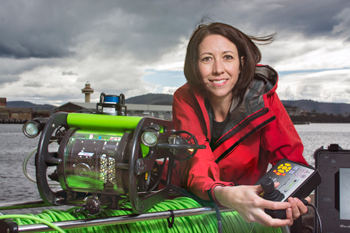
She attended Princeton University in New Jersey as part of only the third class that included women. She became the first woman to leave the university with a degree in astrophysics. She then went to graduate school at Harvard University in Cambridge, Mass. Most of the men around her treated her as an equal, she says, but there were exceptions.
“There were stupid comments from stupid guys sometimes who said, ‘You shouldn’t be doing this,’” she recalls. “But I didn’t let them get to me. My professors were supportive, and most of the students were supportive.”
Elmegreen recommends that young scientists get involved early with science fairs and competitions. “They put you in touch with your future peers at an early age,” she says. At a science fair, you “realize there are other people like you that want to do what you want to do.”
Finding peers may be especially important for girls, particularly in fields where there are few women. Nilanjana Dasgupta is a psychologist at the University of Massachusetts Amherst. In a 2015 study in PNAS, she and her colleagues placed engineering students into small groups. Some groups had equal numbers of men and women. Other groups were mostly women or mostly men. When the women weren’t outnumbered, they were confident about their abilities and career goals. The scientists suggest women may defeat stereotypes about what females can do by working alongside other women.
The value of passion
Elmegreen has another piece of advice for aspiring scientists: Follow your passion. “That gives you the perseverance to get through anything that might come your way.”
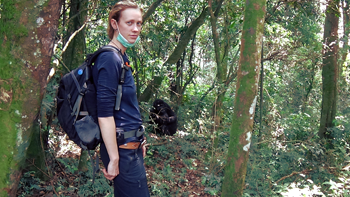
Lisa Seacat DeLuca has done just that. She’s a software engineer and inventor at IBM. At age 32, she has more patents than any other female inventor in the company’s history. A patent is a way to officially claim an original idea. It’s a license from the government that lets a person be the only one who can control who makes or uses that invention.
Over the years, DeLuca has created a wide variety of devices. They include a pendant that lights up when someone mentions a certain topic on Twitter. She’s also invented programmable Christmas lights — and more than 200 other things. Her first invention, from second grade, was a wearable umbrella — made from a dinner plate and a shower curtain.
“Invention is one of my favorite things,” she says. DeLuca feels excited not only about her own inventions, but also about those created by the people around her. “I think everyone’s an inventor,” she says.
When DeLuca chose to study computer science, she entered a field dominated by men. But that didn’t stop her. Now, she regularly talks to girls who are interested in computer coding and software. “If you have an idea, don’t be afraid to follow it,” she says.
Taking the risk that you might fail is part of a healthy process of growth. It’s also part of every science challenge, from building a lunar lander out of notecards to inventing new software. DeLuca recommends that girls — and boys — chase their science and invention ideas until they succeed or fail. A success is a success, of course. But a failure can teach a person valuable lessons — especially in software. “The more you play around with technology, the better you get at it,” she says.
At IBM, she regularly attends sessions where inventors share ideas to see what might succeed. That’s one of DeLuca’s favorite parts of her job because anyone can participate.
“It’s all about the ideas,” she says, “not about who you are.”
Note: The images in this story were submitted to Science News for Students in response to a request we posted earlier this month on the Eureka! Lab blog. Additional photos and other materials will appear on Eureka! Lab in the coming days. We thank everyone who participated!







